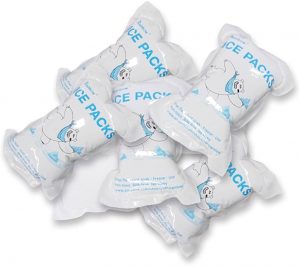How to Transport Cold Food Without a Cooler: Creative Solutions for On-the-Go
When it comes to transporting cold food without a cooler, you might find yourself in a tricky situation. Whether you’re on a road trip, camping, or simply don’t have access to a cooler, keeping your perishable items chilled can be a challenge. However, with some creative thinking and a few handy tips, you can still enjoy fresh and cold food on the go. In this article, we’ll explore various methods and techniques to keep your food cool without a traditional cooler. How do you transport cold food without a cooler?
Understanding the Science of Keeping Food Cold
Before we dive into alternative methods for transporting cold food, it’s essential to understand the principles that keep food cold. The key is to maintain a low temperature and minimize heat transfer. Here are the basic principles to keep in mind:
1. Insulation is Key
Insulating your food is crucial to keep it cold. Insulation materials, such as foam, blankets, or even newspapers, can create a barrier that prevents the transfer of heat. You’ll want to wrap your food items in these materials to maintain a lower temperature for longer.
2. Evaporation Cooling
Evaporation can be a powerful tool for keeping food cool. By using materials like wet towels or cloth, you can create a cooling effect as water evaporates, drawing heat away from your food items.
3. Choose the Right Packaging

Your choice of packaging can make a significant difference in keeping food cold. Using airtight containers or vacuum-sealed bags can help preserve the temperature of your food.
Alternative Methods for Transporting Cold Food
Now that we have a good understanding of the science behind keeping food cold, let’s explore various alternative methods to transport your cold items without a traditional cooler:
1. Insulated Bags and Boxes
Insulated bags and boxes are designed to maintain temperature for extended periods. These are readily available and come in various sizes, making them a convenient option for keeping food cold. Some even have built-in ice packs to enhance cooling.
2. Dry Ice
Dry ice, which is solid carbon dioxide, is an excellent choice for keeping food cold without a cooler. It’s much colder than regular ice, and it doesn’t melt into water, eliminating the risk of food becoming soggy. Remember to handle dry ice with care, as it can be extremely cold and may cause frostbite if touched directly.
3. Frozen Gel Packs
Frozen gel packs are a convenient alternative to ice. They’re reusable, stay cold for a long time, and won’t create a mess as they melt. Simply freeze the gel packs ahead of time and place them with your food to keep it cool.
4. Insulated Thermos or Flask
Insulated thermoses or flasks are typically used for keeping liquids hot, but they can also keep cold food items chilled. These containers are airtight and provide excellent insulation, making them a great option for transporting salads, fruits, or other cold dishes.
5. Aluminum Foil and Reflective Sunshades
If you’re in a pinch and need to improvise, you can use aluminum foil to wrap your food. The reflective properties of aluminum foil help to repel heat. Combine this with reflective sunshades placed under and over your food to create a barrier against the sun’s rays.
6. Underground Storage
If you’re camping or have access to soft ground, consider digging a shallow hole and burying your food container. The earth acts as a natural insulator, helping to maintain a lower temperature. Just be sure to mark the location and dig it up within a reasonable time to avoid spoilage or attracting wildlife.

Using Science to Your Advantage
Now that you have a variety of methods to choose from, it’s essential to apply the science of keeping food cold to maximize their effectiveness:
Ensure a tight seal: Regardless of the method you choose, make sure containers are tightly sealed to prevent heat exchange.
Keep your food pre-chilled: Start with already cold or frozen items, so you’re not relying solely on your chosen method to cool them down.
Minimize air space: When packing your food, minimize air gaps in your container, as air can trap heat and reduce the cooling efficiency.
Food Safety Considerations
While these methods can help keep your food cool without a cooler, it’s crucial to prioritize food safety:
Use a food thermometer to ensure perishable items remain below 40°F (4°C).
Don’t leave food out for extended periods, especially in hot weather.
If you’re unsure about the safety of your food, it’s better to err on the side of caution and discard it.
Conclusion
Transporting cold food without a cooler is entirely possible with a little creativity and a basic understanding of the science behind keeping food cold. Whether you choose insulated bags, dry ice, or underground storage, your perishable items can remain fresh and safe to eat while you’re on the go. So, the next time you’re faced with the challenge of keeping your food cool without a cooler, remember these alternative methods and enjoy your chilled meals wherever your adventures take you. https://commgen.com.au/product/tretight-inflatable-dock-seals/

Recent Comments